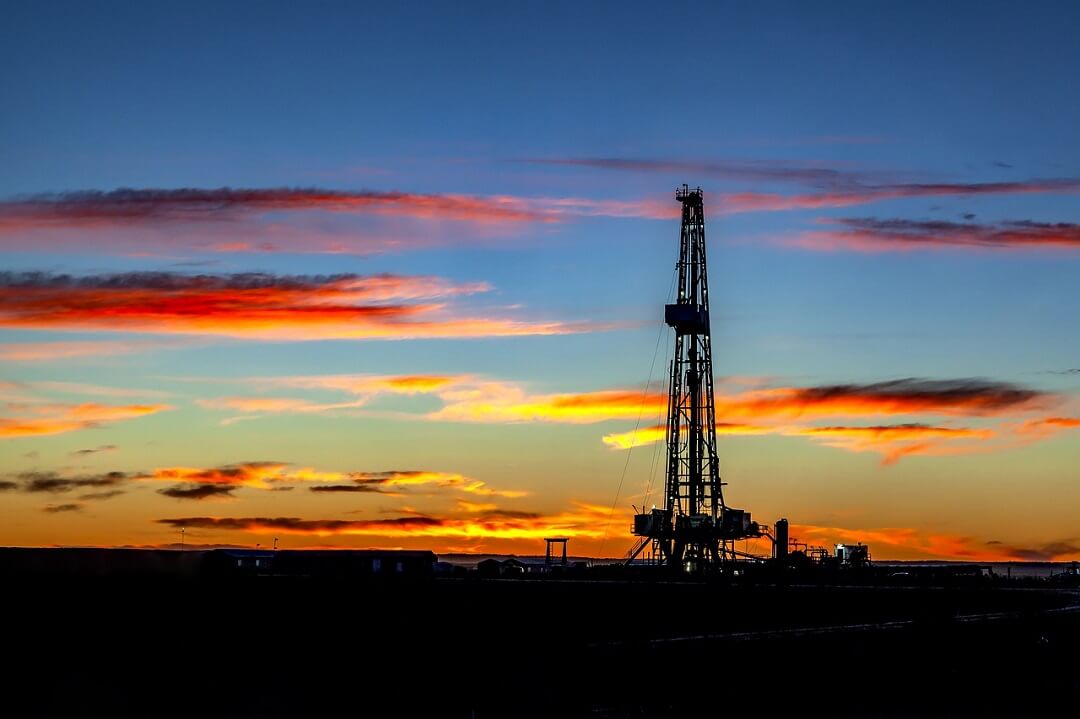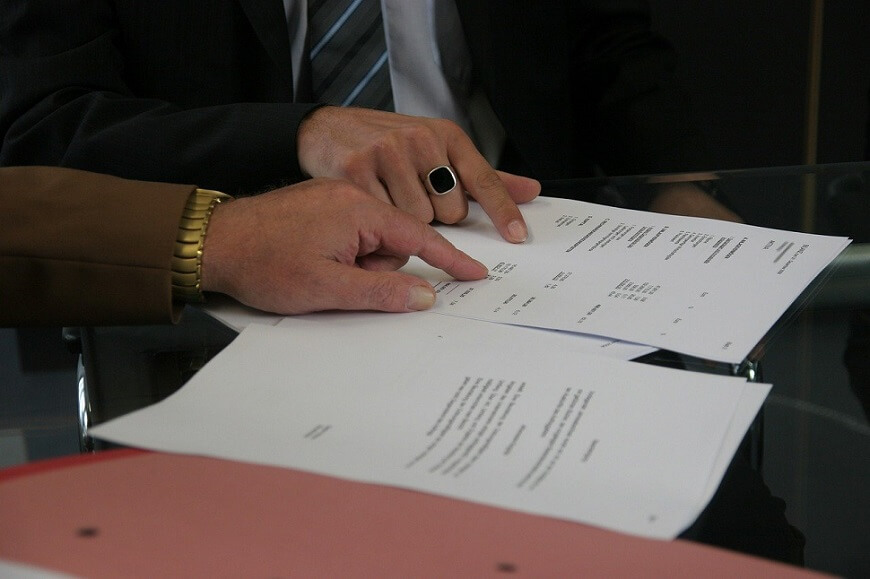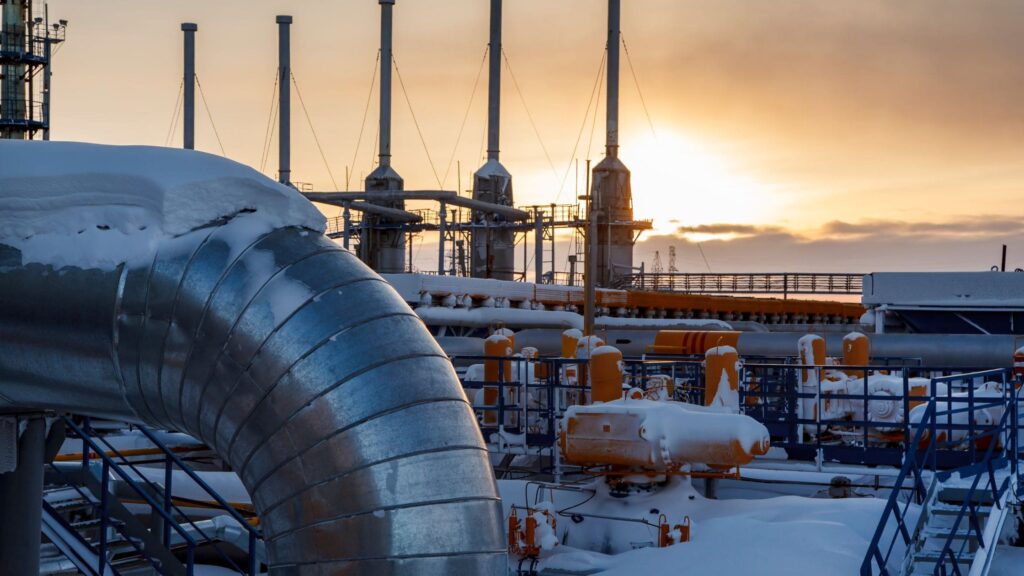Oil royalties along with gas royalty payments can be lucrative investment opportunities for both buyers and sellers. The important thing to remember is regardless of whether you’re buying or selling oil and gas royalty payments as an investment, you need a reliable, trusted, and experienced brokerage.
In this article, we will guide you on what are oil royalties, as well as gas lease royalties, how the values of lease royalties are calculated. You will also learn about buying and selling oil and gas lease royalty opportunities. And last but not least – how much is the average oil and gas royalty payment.
A Short Primer on Mineral Rights
The investment world focuses on the stock market for the most part, but there is a portion of the investing community that has experience in other areas of growth.
Commodities trading includes many types of products like orange juice or soybean futures, but it also includes oil and natural gas. The prices for these commodities rise and fall dependent upon a variety of factors, and for the savvy mineral rights investor, opportunities abound.
While some landowners convey mineral rights along with a property’s surface rights, in the right geologic areas, mineral rights are bought and sold with an eye on potential future development or, if the property is already in production, expansion of the oil and gas field’s output.
Understanding Oil and Gas Royalties
Like royalties paid on manufactured products to their inventors or musicians for their songs, oil and gas royalties are paid on how much material is produced and the current value of the oil or natural gas at the time of its extraction,
The first thing to consider when looking at oil and gas royalty payments is how much interest an investor has in a particular well.
Landowners can potentially receive 100% of the royalty payments generated by a well on their property, or they can sell shares in future royalty payments to make cash for themselves. It is worth taking the time to understand the type of investment commodity, the industry it exists inside, the trends for the commodity’s use, the commodity’s longevity, and many other issues and factors.
What is an Oil or Gas Royalty Interest?
The definition of an Oil & Gas Royalty interest, as stated by MineralWise.com is, “Royalty interest is an oil and natural gas lease that gives the owner of the interest the right to receive a portion of the production from the leased acreage (or of the proceeds of the sale thereof), but generally does not require the owner to pay any portion of the costs of drilling or operating the wells on the leased acreage.”
Whether the royalty owner’s interest in the oil and gas lease is purely due to an investment scenario or due to being in the oil and gas drilling industry, it is essential to consider the source of the property or the lease holder’s interest before deciding to invest.
Interest Owner or Non-Interest Owner
There are two designations for investors in oil and gas royalties, Interest Owner and Non-interest Owner.
-
An interest owner is an investor who also owns the property and/or the company that is prospecting, drilling, or extracting materials from the ground. An interest owner can be an oil drilling and/or production company.
-
A non-interest owner is an investor who is not responsible for prospecting, drilling, or extracting material. The non-interest royalty owner only has an interest in the output of the well, not the costs involved in discovery, accessing, or production costs of underground commodities.
What are the different types of royalty interests
There are 4 main types of royalty interests:
- Working Interest (WI) – Exploration & Production (E&P) companies lease all or part of the subsurface rights from the landowner through a WI lease. The owner of the WI can explore, drill, and produce the mineral reserves under the land. The WI owner incurs all of the costs associated with exploration and development activity. All of the profits ( revenues – costs ) go to the owner after revenues are paid on any share in the mineral interests leased to third parties.
- Royalty Interest (RI) – In exchange for granting a WI in mineral resources, a landowner receives a royalty interest in the mineral estate. In addition to a right to a percent of the revenues if and when a well goes into production, the royalty owner has executory rights and is entitled to bonuses and lease payments. These revenues are paid out in regular royalty streams. The RI holder shares in their proportional ownership share of the revenues. This revenue share is typically 12.5 – 25 percent of the revenue generated from the mineral reserves under the WI. The RI does not reflect production costs. The royalty owner retains ownership of the mineral interest after production stops, although royalty payments will cease with production. Both WI and RI holders can lease a share of their interests to third parties. An AR can lease an interest with or without rights to the bonus and revenue sharing.
- Non-participating Royalty Interest (NPRI) – The NPRI is a lease granted by the RI owner. It includes a share in royalties from production revenues but no executory rights to issue new leases or receive bonuses or lease payments.
- Overriding Royalty Interest (ORRI) – When a working interest owner leases a part of the WI to a third party, it is called ORRI. It is an undivided, non-possessory right to a share of the production, excluding production costs of the mineral lease.
How to Calculate an Oil or Gas Royalty Payment?
Calculating the value of Oil royalties or Gas lease royalty payments can be accomplished in several different ways.
Different valuations come about due to the importance those estimating the value give to certain factors related to the oil or gas leased property, including its production history, future plans for expanding the production field, trends in the commodity’s value over time, and many other considerations.
That’s why it’s crucial to gather as much relevant information as possible to determine as accurate a valuation as possible. There are five main areas to consider when calculating an Oil or Gas Royalty’s future potential:
- Acreage is owned by a lessor within the commodity production unit or area.
- The total acreage of the oil and/or gas production field.
- The total amount of oil and/or gas production within the field holding lease property.
- Production costs are charged before calculating net revenue for royalty interest.
- Royalty percentage earned from oil and/or gas lease agreement.
Average Oil Royalty Payment For Oil Or Gas Lease
The federal government charges oil and gas companies a royalty on hydrocarbon resources extracted from public lands. The standard Federal royalty payment was 12.5%, or a 1/8th royalty. The Trump Administration drastically cut royalty rates by linking the rates to the price of oil. On some lands, the rates have fallen as low as 0.5 percent.
The royalty rates charged by states and private landowners have risen in recent years. Oil and gas companies are paying the highest royalty payments in the states with productive shale plays.
- Texas has the highest royalty rates of 20–25%.
- Royalties in the Permian Basin spanning Texas-New Mexico and North Dakota Bakken Basin range from 18–20%.
- Many western states charge royalties of 16.67 percent.
Royalties on private lands are influenced by state rates. They generally range from 12–25 percent. Before negotiating royalty payments on private land, careful due diligence should be conducted to confirm ownership. Mineral ownership records are often outdated.
How to Calculate Net Revenue Interest on an Oil or Gas Lease?
The Net Revenue Interest (NRI) in an oil or gas lease can be calculated using the following formula:
Share of Interest X Royalty Rate = Net Revenue Interest (NRI)
For example, if you own a 25% interest in a producing oil or gas well and the Royalty Rate for the well is set at 8% of the well’s production of materials, then you own 3 1/8% of the value of production (0.25 x 0.125 = 0.03125). If the well is producing $100,000 worth of material each month, your share of that amount would be approximately $3,125.00.
Oil Lease Price Per Acre
There are additional revenue sources for oil royalties and gas leases, like receiving revenue based on the oil lease price per acre for undeveloped land. Landowners can sell mineral rights by leasing the mineral rights to speculators who want to discover and produce oil and gas from their property.
Oil lease price per acre can sell for between a few dollars to hundreds of dollars per acre, depending upon the geophysics and geology of the site being leased.
How Long Do Oil and Gas Leases Go For?
Unlike some commodities that can be produced year after year, oil and gas generally run out over time. After production peaks, the costs of removing the commodity can outweigh the revenues generated once the field has been fully exploited. In general, an oil or gas field will produce for up to 35 years on average.
Given all the ups and downs in the stock market and other commodity-based investments, an investment that can generate income for over 20 years is a good investment for those seeking secure, long-term returns for their investment dollars.
Every royalty agreement is different, so it is important to understand the conditions and circumstances surrounding an oil or gas lease before investing in a royalty opportunity.
Reasons for Selling an Oil or Gas Royalty
Of course, there are many reasons for someone to sell their oil or gas royalty. Estate planning, divorce, investment divestiture, and a hundred other reasons bring oil and gas royalties onto the open market for sale. In some cases, a producing field is diminishing its output, and the royalty owner wants to put their money into a different production location or opportunity. Sellers can put their royalty lease on the market via brokerages, or they can try to sell their royalty rights on their own.
Caution should be exercised when buying privately sold royalty rights to determine actual ownership, land and production values, deed and title concerns, and other important qualifying considerations. Many potential investors prefer to utilize the services of a licensed and bonded dealer rather than take their chances with individual owners selling royalties.
How to Buy Oil and Gas Royalties?
The process of buying or investing in oil and gas royalties can be challenging for some and less so for others. Some investors perform their due diligence concerning a purchase of royalties, and they don’t mind taking time to investigate, value, and calculate returns on their own.
The internet provides a great deal of information concerning properties, and there is a lot of documentation available relating to output numbers and economic concerns. However, many investors leave the homework and analysis up to experts and find it is simpler, faster, and better for them to work with a royalty brokerage that has experience in the field.
Cash flow, taxes, and other financial considerations must be understood fully before making an investment, and a high-quality investment brokerage will help define the risks and rewards as well as provide insight into potential costs and other factors.
When to Buy Oil & Gas Royalties
Like most other things in life, timing is everything. Knowing when to get in and when to get out is the key to any financial investment scenario, and the oil and gas industry is no different.
This is where specific knowledge can help make the right investment in the right opportunity at the right time. Oil and Gas investment is not like investing in stocks and bonds. A universe of factors revolves around the oil and gas industry.
Economics, politics, laws, taxes, and a dozen other areas should be investigated thoroughly before investing. With proper investigation and analysis, the opportunity to purchase an oil or gas royalty can happen at any time in the commodity price cycle.
That’s why it’s always advisable to work with a reputable and trustworthy investment group when looking at oil and gas royalty opportunities.
Where to Buy or Sell Oil and Gas Royalties?
Here’s where the rubber meets the road. At Pheasant Energy, we are a little biased when it comes to recommending a quality brokerage with years of experience and many happy investors. Every day, we deal with issues, problems, successes, and failings in the oil and gas industry. As a company that explores new oil and gas fields as well as a company that helps guide investors in making the proper placement of their funds, Pheasant Energy relies on two things – honesty and integrity.
PHEASANT ENERGY WORKS ON BOTH SIDES OF THE TABLE
Buying or selling oil and gas royalties isn’t a mystery to the folks at Pheasant Energy. It’s what we do every day.
As a broker of royalty interests, we know the value of doing our homework. More importantly, as a company that explores, drills, and develops oil and gas sites, we know the ins and outs of the investment process better than anyone. Investors can do business with a company that has employees sitting behind desks, typing on keyboards, and answering the phone all day.
That company may know a little bit about the oil and gas industry, but it’s mostly from what they’ve read and found on the internet.
At Pheasant Energy, we go a lot farther than a bunch of cubicle experts – we’re in the field, literally.
We know what it takes to prospect, drill, and recover oil and gas because that’s what we do and what we’ve done for over 4 generations.
75 YEARS IN THE INDUSTRY MAKES A DIFFERENCE INVESTING IN OR SELLING INVESTMENTS
At Pheasant Energy, we are proud to say that our family has been in the oil and gas industry for 75 years. We’ve experienced the ups and downs of the oil and gas industries since the end of World War II.
As a family-owned and family-run business, we understand how meaningful long-term relationships are and how rarely they happen.
Our clients have been with us for a long time, through thick and thin, and they’re still with us. That’s how we’ve stayed in business generation after generation. It’s called trust, and we know how important and how valuable that trust is to our company and our investors.
Bottom Line
Investing in or selling oil royalties or gas leases can be a complex and confusing process for even the most experienced investor. For those unacquainted with the oil and gas industry but seeking to get engaged, it’s always best to work with a trustworthy and reliable resource.
Nothing can replace years of experience and the skills the experience develops over time.
The team at Pheasant Energy has the expertise, experience, and ability to help everyone, from new investors to veteran asset managers.
The right advice, support, and experience all come together with one goal in mind – 100% client satisfaction. Pheasant Energy talks in a language that is easy to understand and provides guidance coming from a background in the oil and gas industry that is hard to duplicate.








Hi own two properties in freedom. Ny 14065…..one is 22 acreas mostly woods have main road leading in opens up in woods have barn electric pond …..another property on 4 acreas mostly woods opening in back about two miles away from 22 acreas site …..both in cattargus county NY 14065……looking to find gas companies which might like to lease gas well share the profits on both properties own the gas mineral rights ….5 acrea home own free and clear the 22acrea site buying from rich guy ….on land contract he has no problem with Puting gas well on says it only helps me pay him my monthly mortgage lol he sign if needed something ……just trying to find honest company get good lease thank you ….if you can’t do ny can you tell me who does leases for gas Wells in NY thank you
Hi My name is Bill, I live in Gibson twp, susquahanna county,Pa. I own a small piece of property, Four .4 acres, I’m leased on to cabot. I recently received a letter from Pennmarc wanting to purchase my lease, offering me $13,200, a little less than i received from Cabot.I am 80 years old, so i don’t think waiting any longer is the best way to go. I would appreciate an offer from you,thank you and have a great Christmas